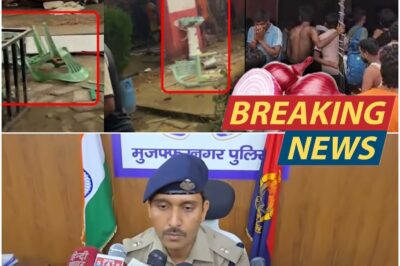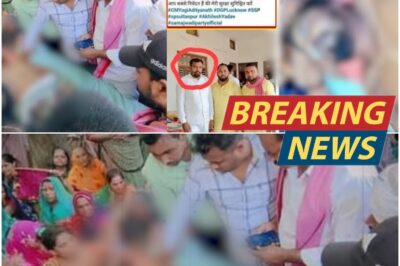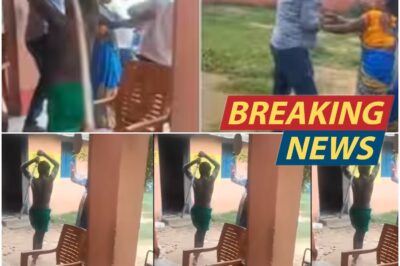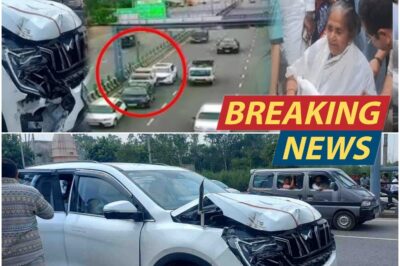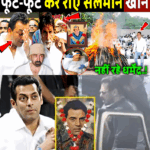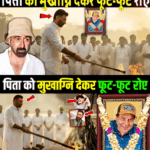After Operation Sindoor: Pakistan’s Shelling Leaves Jammu & Kashmir in Ruins
Shattered Homes, Shattered Lives: The Aftermath of Operation Sindoor in Jammu & Kashmir
In the remote borderlands of Jammu & Kashmir, where the snow-capped mountains of the Himalayas meet the barbed wire of the Line of Control, life is a fragile negotiation with uncertainty. Here, the threat of conflict is not an abstract headline—it is a daily reality that shapes every home, every routine, and every dream. In the wake of Operation Sindoor and the latest round of shelling from across the border, that reality has once again turned nightmarish for countless families.
This is the story of one such family from Uri, whose lives have been upended by the violence, and whose voices reveal the true cost of conflict—a cost measured not just in numbers, but in fear, displacement, and the relentless task of rebuilding what war destroys.
.
.
.

A Night of Terror
It began, as it often does, with the sound of artillery echoing through the valleys. On the night of the shelling, the family huddled inside their home, the walls trembling with every explosion. For Rita Devi, the memory is still raw.
“We were sitting inside, sleeping, when suddenly the firing started,” she recalls, her voice shaking. “We could hear the shells landing close by. We ran to another house—somehow, we survived. But the fear, the chaos… it’s impossible to describe.”
The children cried out in terror, the elders struggled to move, and nobody knew if the next shell would find its mark. As the barrage continued, the family made a desperate decision: they would flee to Baramulla, seeking refuge with relatives. It was not the first time they had been forced to leave everything behind—and, as Rita points out, it likely would not be the last.
The Toll of Repeated Displacement
In the aftermath, as the shelling subsided and the uneasy silence returned, the family began the long journey back to what was left of their home. The sight that greeted them was devastating: shattered windows, doors torn from their hinges, and the roof pockmarked with holes from mortar fragments.
“How many times will we have to rebuild?” Rita asks, her frustration and exhaustion palpable. “In 2005, our house was destroyed. We rebuilt. Now, again, everything is broken. Where will we go? How many times can we start over?”
The children, some still missing or away on duty, are scattered. One is at the power house, another is unaccounted for, and a third, she says, was with her last night but is now gone again.
The uncertainty gnaws at her. “The children are afraid to be alone. We are afraid to leave them. Where can we go with small children and elders? There’s nowhere safe.”
Living With Fear
The fear, Rita says, is constant. Even when the guns fall silent, the memories linger. “We are always scared. The children are scared. What can we do?”
Her words are echoed by her neighbors, who have also returned to scenes of destruction. The village is a patchwork of broken homes and shattered glass, the ground littered with the remnants of war—splinters of mortar shells, twisted metal, and debris.
For the elderly, the trauma is especially acute. “She can’t walk, she can’t see well,” Rita says, gesturing to her mother-in-law. “She can’t even speak properly anymore. How do we move her? How do we keep her safe?”
The Relentless Task of Rebuilding
Walking through the ruins, the extent of the damage is overwhelming. The roof, designed in a triangular shape to shed the heavy winter snow, is now riddled with holes from shell fragments. The doors and windows have been blown off, their shattered remains scattered across the ground. Glass lies in jagged pieces on the floor, a silent testament to the violence that visited this home.
“It’s all finished,” Rita says, her voice flat with resignation. “I don’t understand what anyone gains from this. What is the point of such destruction?”
The family points to a tree outside, where one of the mortars landed. The shockwave, combined with the spray of shrapnel, caused extensive damage—not just to their home, but to their sense of security.
A History of Broken Promises
As the family surveys the damage, the sense of déjà vu is inescapable. “Our trust was broken in 1998, again in 2005, and now in 2025,” Rita says. “Every time, we rebuild. Every time, we hope it will be the last. But every time, our hopes are shattered.”
The cycle of violence and rebuilding is exhausting, both physically and emotionally. Each time, the family invests what little they have into reconstructing their home, only to see it destroyed again. Each time, they must find the strength to start over.
The Impact on Children
For the children, the trauma is especially profound. “One child is missing, another is away on duty, and the third was with me last night but is gone again,” Rita says, her worry etched deep into her face.
The constant upheaval disrupts their education, their friendships, and their sense of stability. “They are afraid to be alone. They jump at every loud noise. How can they grow up like this?”
The psychological toll is immense. Many children in these border areas suffer from anxiety, nightmares, and a pervasive sense of insecurity. Their childhoods are marked not by play and laughter, but by fear and uncertainty.
A Community on Edge
The story of Rita’s family is not unique. Across the villages of Uri, Baramulla, Jammu, and Srinagar, thousands of families have been displaced by the latest round of shelling. Many have sought shelter with relatives, crowding into small homes and makeshift camps, waiting for the violence to subside before daring to return.
For some, the return is bittersweet. “We come back because we have nowhere else to go,” says another villager. “But every time we rebuild, we wonder how long it will last. Will we be safe this time?”
The sense of betrayal is palpable. The promise of peace, so often repeated by politicians and officials, feels hollow in the face of repeated violence.
The Physical and Emotional Damage
The physical damage is easy to see: broken walls, shattered windows, roofs caved in by the force of explosions. But the emotional damage is harder to measure.
“People think we get used to it,” Rita says. “But you never get used to living in fear. Every time the shelling starts, it’s like the first time all over again.”
The trauma lingers long after the last shell has fallen. Children are haunted by nightmares, elders by memories of past wars. The community is left to pick up the pieces, both literally and figuratively.
The Cost of Conflict
As a reporter, walking through these villages, I am struck by the resilience of the people—but also by the toll that years of conflict have taken. There is a weariness here, a sense that hope is a luxury few can afford.
In every home, the story is the same: repeated displacement, repeated loss, and the relentless task of starting over. Yet, amid the ruins, there is also a fierce determination to survive.
“We have no choice,” Rita says. “This is our home. We will rebuild, because we must. But we pray that one day, we will not have to do it again.”
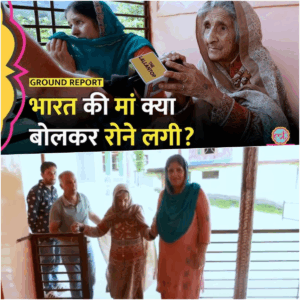
A Plea for Understanding
As the family shows me around their damaged home, I am reminded of the human cost of conflict. It is easy, from a distance, to speak in terms of strategy and retaliation, of operations and ceasefires. But for the people who live on the frontlines, the reality is far more personal.
“We are not politicians, we are not soldiers,” Rita says. “We are just families trying to live our lives. We want peace. We want safety. Is that too much to ask?”
Her plea is echoed by others in the community. “We are tired of being caught in the middle,” says a neighbor. “We want the world to see what is happening here—not just the headlines, but the reality.”
The Role of the Media
In the aftermath of the shelling, the media descends on the village, cameras rolling, microphones thrust into the faces of survivors. For a brief moment, the world’s attention is focused on their plight.
But too often, the coverage is fleeting. The stories are reduced to soundbites, the suffering to statistics. The deeper truths—the fear, the resilience, the longing for peace—are lost in the rush for breaking news.
As a journalist, I am acutely aware of the responsibility we bear. It is not enough to simply report the facts; we must also bear witness to the human cost, to give voice to those who are too often forgotten.
Moving Forward: Hope Amidst the Ruins
Despite the devastation, there is a stubborn hope that refuses to die. As the family begins the slow process of rebuilding, they cling to the belief that better days are possible.
“We have survived this long,” Rita says. “We will survive again. But we hope that one day, our children will not have to live through what we have lived through.”
The community rallies together, sharing resources, offering comfort, and helping each other rebuild. It is a testament to the strength of the human spirit—a reminder that even in the darkest times, hope can endure.
A Call for Action
As the sun sets over the mountains, casting long shadows across the ruined homes, I am left with a sense of urgency. The world must not look away. The suffering of these families is not inevitable; it is the result of choices—by politicians, by armies, by those who wield power.
If there is to be peace, it must begin with understanding—with seeing the people behind the headlines, and recognizing their right to safety, to dignity, to hope.
Conclusion: The Real Cost of War
In the end, the story of Rita’s family is the story of countless others along the Line of Control. It is a story of loss and resilience, of fear and hope. It is a reminder that the true cost of war is not measured in territory gained or lost, but in the lives shattered, the homes destroyed, and the futures stolen.
As I leave the village, I am haunted by Rita’s words: “What do people gain by doing this?” It is a question for which there is no easy answer. But it is a question we must all confront, if we are to build a future where families like hers can live in peace.
Play video:
This report is part of our ongoing coverage from the border regions of Jammu & Kashmir. I am Siddharth, with Vijay and our team, committed to bringing you the stories that matter. Stay safe, stay informed.
News
Missing PG Student Monica from Darbhanga CM College Found in Shocking Condition—Police Stunned
Missing Darbhanga CM College Student Monica Found Safe—Reveals She Left Home Willingly to Marry A week-long mystery surrounding the disappearance…
Chaos on the Kanwar Yatra: Devotees Go on Rampage, Vandalize Dhaba from Muzaffarnagar to Roorkee!
Kanwar Yatra Turns Violent: Kanwariyas Vandalize Dhabas from Muzaffarnagar to Roorkee Over Onion in Food A shocking wave of violence…
Uproar After Samajwadi Party Leader Sunil Yadav’s Death: Ex-MLA and Brother-in-Law Named in FIR!
Uproar in Sultanpur After Samajwadi Party Leader Sunil Yadav’s Mysterious Death: Former MLA and Brother-in-Law Named in FIR A wave…
Shocking Viral Video: Teacher Beats Student with Stick in Bihar School—Discipline or Violence?
Bihar School Turns Battleground: Viral Video Shows Teacher Beaten Brutally by Angry Parents—Discipline or Violence? A shocking video has taken…
Forced to Strip at Knifepoint: Obscenity in the Name of Jobs—What’s Happening in Uttar Pradesh?
Job Promise Turns Nightmare: Woman Forced to Undress at Knifepoint in Uttar Pradesh Official’s Quarters Uttar Pradesh: A shocking video…
UP Education Minister Injured in Road Accident as Convoy Cars Collide
UP Education Minister Gulab Devi Injured in Road Accident as Convoy Cars Collide Hapur, Uttar Pradesh: Uttar Pradesh’s Education Minister,…
End of content
No more pages to load


